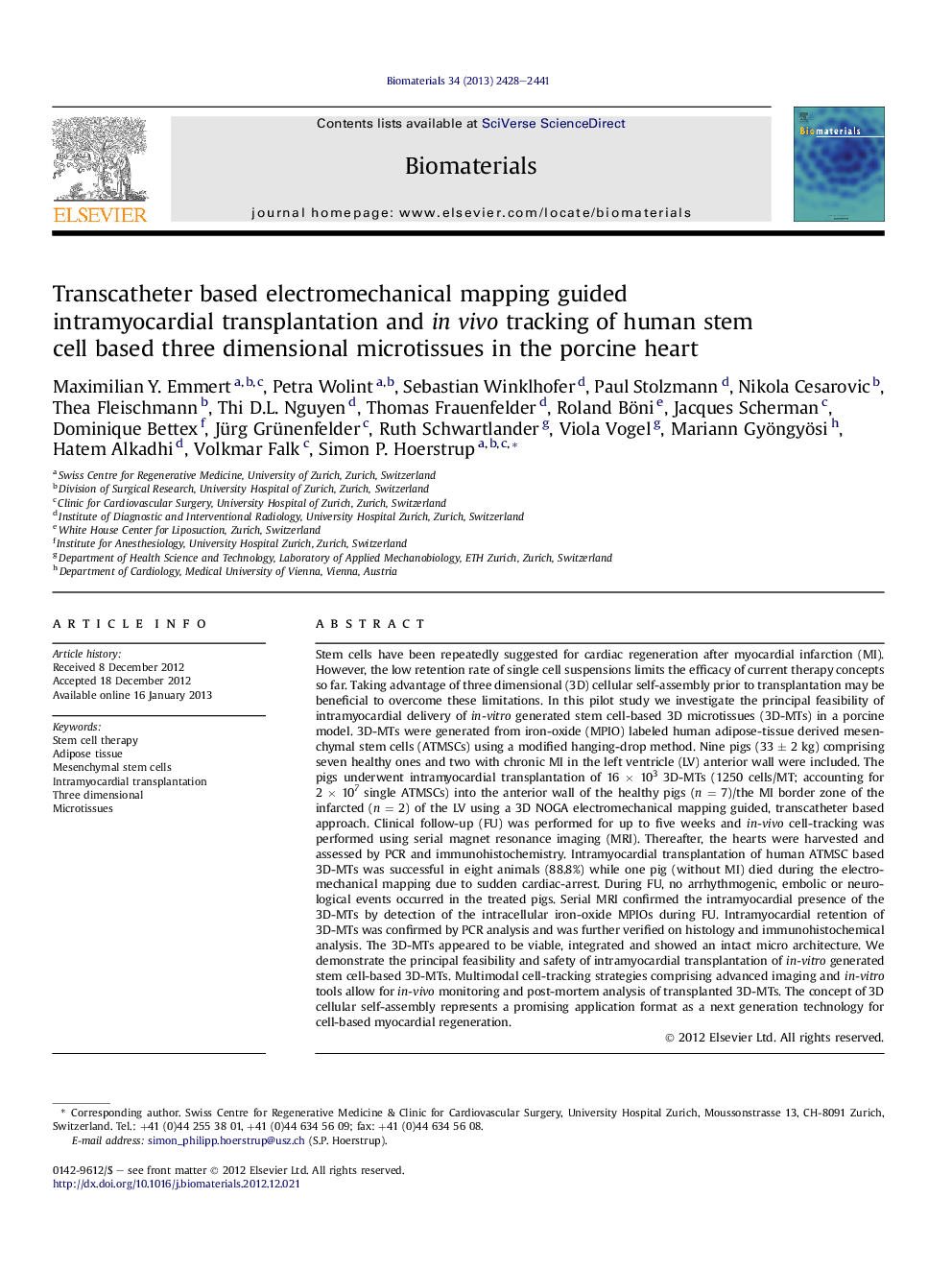| Article ID | Journal | Published Year | Pages | File Type |
|---|---|---|---|---|
| 10228423 | Biomaterials | 2013 | 14 Pages |
Abstract
Stem cells have been repeatedly suggested for cardiac regeneration after myocardial infarction (MI). However, the low retention rate of single cell suspensions limits the efficacy of current therapy concepts so far. Taking advantage of three dimensional (3D) cellular self-assembly prior to transplantation may be beneficial to overcome these limitations. In this pilot study we investigate the principal feasibility of intramyocardial delivery of in-vitro generated stem cell-based 3D microtissues (3D-MTs) in a porcine model. 3D-MTs were generated from iron-oxide (MPIO) labeled human adipose-tissue derived mesenchymal stem cells (ATMSCs) using a modified hanging-drop method. Nine pigs (33 ± 2 kg) comprising seven healthy ones and two with chronic MI in the left ventricle (LV) anterior wall were included. The pigs underwent intramyocardial transplantation of 16 Ã 103 3D-MTs (1250 cells/MT; accounting for 2 Ã 107 single ATMSCs) into the anterior wall of the healthy pigs (n = 7)/the MI border zone of the infarcted (n = 2) of the LV using a 3D NOGA electromechanical mapping guided, transcatheter based approach. Clinical follow-up (FU) was performed for up to five weeks and in-vivo cell-tracking was performed using serial magnet resonance imaging (MRI). Thereafter, the hearts were harvested and assessed by PCR and immunohistochemistry. Intramyocardial transplantation of human ATMSC based 3D-MTs was successful in eight animals (88.8%) while one pig (without MI) died during the electromechanical mapping due to sudden cardiac-arrest. During FU, no arrhythmogenic, embolic or neurological events occurred in the treated pigs. Serial MRI confirmed the intramyocardial presence of the 3D-MTs by detection of the intracellular iron-oxide MPIOs during FU. Intramyocardial retention of 3D-MTs was confirmed by PCR analysis and was further verified on histology and immunohistochemical analysis. The 3D-MTs appeared to be viable, integrated and showed an intact micro architecture. We demonstrate the principal feasibility and safety of intramyocardial transplantation of in-vitro generated stem cell-based 3D-MTs. Multimodal cell-tracking strategies comprising advanced imaging and in-vitro tools allow for in-vivo monitoring and post-mortem analysis of transplanted 3D-MTs. The concept of 3D cellular self-assembly represents a promising application format as a next generation technology for cell-based myocardial regeneration.
Related Topics
Physical Sciences and Engineering
Chemical Engineering
Bioengineering
Authors
Maximilian Y. Emmert, Petra Wolint, Sebastian Winklhofer, Paul Stolzmann, Nikola Cesarovic, Thea Fleischmann, Thi D.L. Nguyen, Thomas Frauenfelder, Roland Böni, Jacques Scherman, Dominique Bettex, Jürg Grünenfelder, Ruth Schwartlander, Viola Vogel,
